The USMC in short
The United States Marine Corps (USMC) is a branch of the United States Armed Forces responsible for providing power projection from the sea, utilizing the mobility of the United States Navy to rapidly deliver combined-arms task forces. The USMC has a rich history and distinct traditions, playing a crucial role in American military operations. The USMC was founded on November 10, 1775, during the American Revolutionary War. The Continental Congress authorized the creation of two battalions of Marines.
The USMC has been involved in nearly every American conflict, including the Revolutionary War, the War of 1812, the Mexican-American War, the Civil War, both World Wars, the Korean War, the Vietnam War, the Gulf War, and the War on Terror.
Its core task is Expeditionary Warfare: The primary mission of the USMC is to serve as an expeditionary force-in-readiness. Marines are trained to respond rapidly to crises around the globe. The USMC specializes in amphibious operations, which involve landing forces on hostile shores. They work closely with the U.S. Navy for these operations.
The USMC is made up of several components, including the Fleet Marine Force (FMF), Marine Corps Reserve, Marine Corps Forces Command (MARFORCOM), and Marine Corps Forces, Pacific (MARFORPAC).
The primary units of the USMC include Marine Expeditionary Units (MEUs), Marine Divisions, Marine Aircraft Wings, and Marine Logistics Groups.
Basic Training: Marine recruits undergo rigorous training at either Marine Corps Recruit Depot Parris Island in South Carolina or Marine Corps Recruit Depot San Diego in California.
Advanced Training: After basic training, Marines receive specialized training based on their Military Occupational Specialty (MOS).

Values and Traditions: Core values of the USMC are Honor, Courage, and Commitment. The motto is “Semper Fidelis,” which means “Always Faithful.”. Symbols are an eagle over a globe, with an anchor emblem on it, underlying a commitment to service both on land and sea.
The USMC maintains a global presence, with forces deployed around the world to support U.S. interests and respond to crises. It continually adapts to new technologies and tactics to remain a highly effective and versatile fighting force and it is known for its distinctive esprit de corps, strong sense of tradition, and the ability to quickly respond to emerging threats and crises.
The Navy-Marine Corps Team
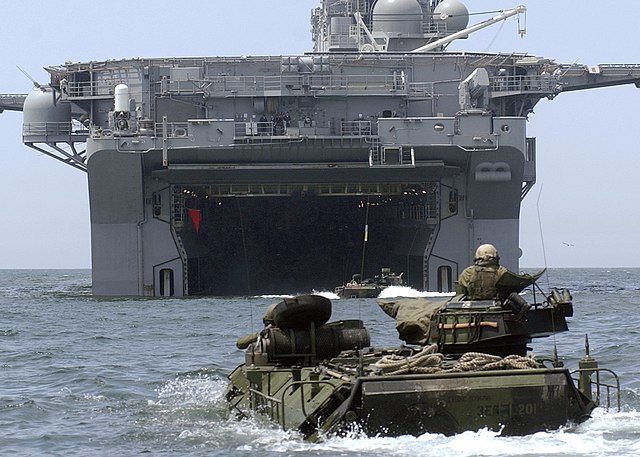
The Marine Corps’s counterpart under the Department of the Navy is the United States Navy. Thus they had a very close relationship, more so than any other branches of the military. It is often found the mention “Navy-Marine Corps Team” or just “Naval Service”. The CNO and Marine Corps Commander both report directly to the Secretary of the Navy. What it offers the Navy is a forward-deployed Marine Expeditionary force, carried by Navy amphibious warships. It is also accompanied by a Marine Aviation fixed-wing fighter/attack asset, distinct of the Carrier Air Wings used by Navy aircraft carriers for cover. The Marine Corps Security Force is also responsible to secure Navy bases, with security battalions and provide Anti-terrorism Security Teams in overseas Navy bases. Marines also ensures the security for the Presidential Retreat in Thurmont (Camp David). A battalion is stationed there as ‘Marine Barracks Washington’.
Cooperation includes common training and instruction of both NCOs and Marine Corps Naval Aviators as well as Naval Flight Officers with both Navy and Marine Corps personnel. Many NCOs of the USMC actually comes from the United States Naval Academy (USNA) as well as from Naval Reserve Officers Training Corps (NROTC). Both staff and faculty had Marine Corps instructors. USMC aviators and flight officers comes from the Naval Air Training Command (NATRACOM). Theere are flight instructors both at the Naval Air Training Command and at Navy’s Officer Candidate School. Enlisted marines in aviation maintenance comes from Navy, not USMC technical training centers. The Marine Corps also trains Navy field medical, Construction (Seabee), and Expeditionary Warfare personnel.
Thus deeply integrated, shared training is vital for precedures as the USMC is hosted, carried to the front and supported by the Navy.
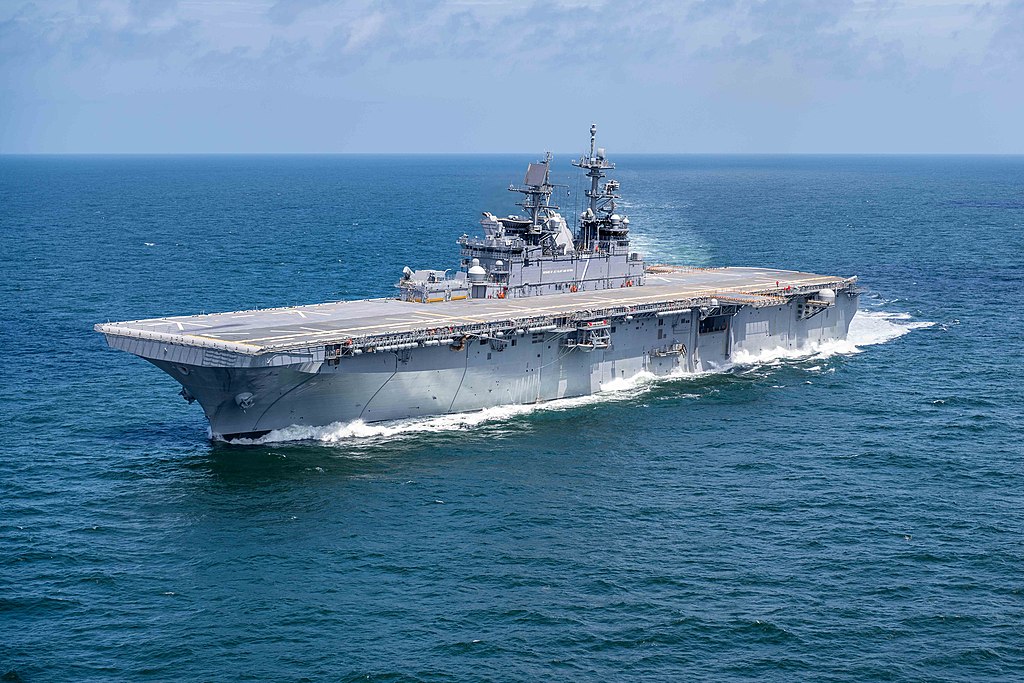
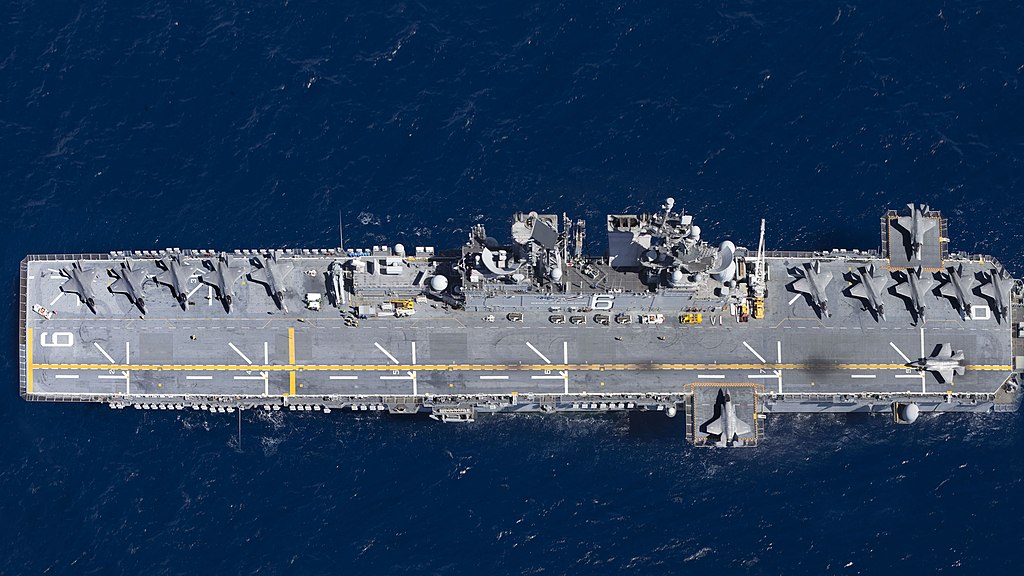
Most Marine aviation assets also derived from the Navy, with a common acquisition program and under the same funding and testing. In fact, aircraft carriers today almost always deploys a Marine squadron in their air group. Noncombatants (chaplains/medical/dental personnel) are filled by naval personnel. The Marine Corps is responsible of land operations in support of naval campaigns and of naval bases. Personals share many naval traditions, terminology and customs. Medal of Honor, awards and badges are identical between both services. Testing of all common air systems are done at NAS Patuxent River. The Blue Angels flight demonstration team has pilots from both the Navy and USMC.
In 2007 however, the Marine Corps joined started to work closely witrh the third naval service, the US Coast Guard, in order to adopt the “Cooperative Strategy for 21st Century Seapower”. It is geared towards war prevention as well as a conduct of war setting up a new framework for the Navy, Coast Guard and Marine Corps to better cooperate on international deployments, work out regional crises, humanitarian disasters and relief, ensuring less paperwork and a quicker reaction to coordinate these service for something that could have negative impacts to the United States in this day and age.
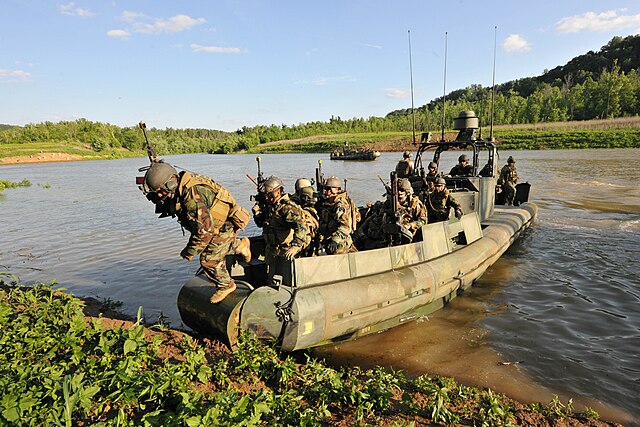
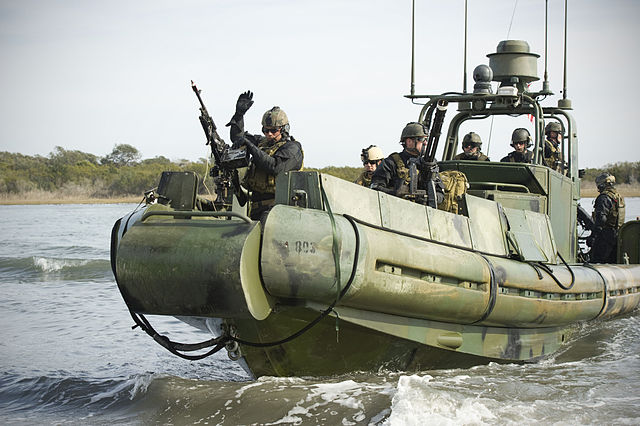
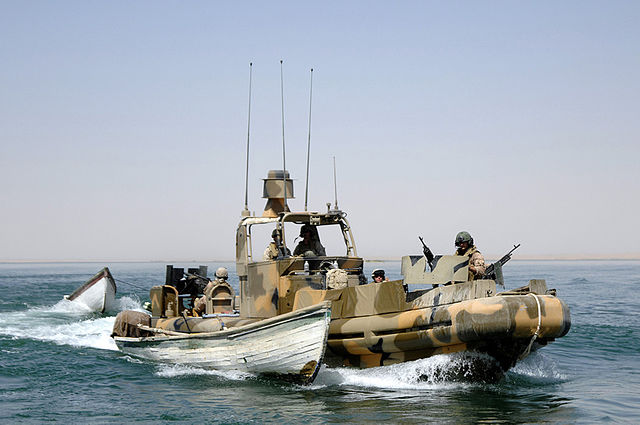
The USMC does not possess ships, provided by the Navy, but certainly boats, for assault like this Small Unit Riverine Craft (SURC).
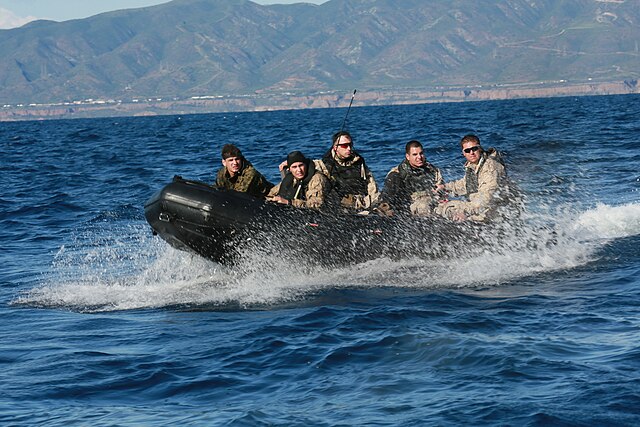
Bases
Marine Corps bases and stations are comprising 14 main locations, hosting its main operating forces, and 7 support and training installations (plus satellite facilities). There are several Marine Expeditionary Forces located on both coasts and abroad, plus reserve units scattered throughout the US. Main bases are:
-Camp Pendleton (West Coast, I Marine Expeditionary Force)
-Camp Lejeune (East Coast, II Marine Expeditionary Force)
-Camp Butler (Okinawa, Japan, III Marine Expeditionary Force).
-The Marine Corps Air Ground Combat Center at Twentynine Palms, California (largest base) for combined-arms live-fire training.
-The Marine Corps Base Quantico (Virginia) for Combat Development Command (“Crossroads of the Marine Corps”)
-Washington, Pentagon: Headquarters, as well as in Henderson Hall, Washington Navy Yard, and the Marine Barracks of Washington, D.C.
USMC Organic Assets
USMC Vehicles
Tanks

USMC M41A3 Walker Bulldog light tank in Vietnam 1969
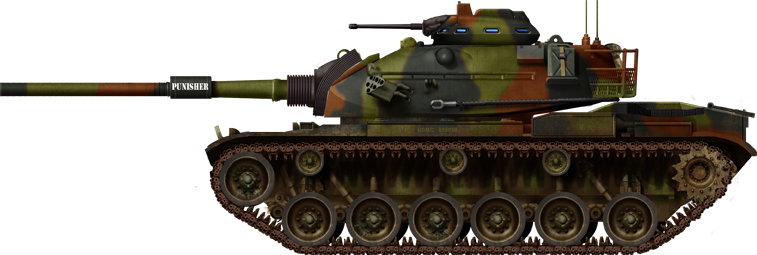
USMC M60A1 Rise TTs deployed in the Grenada invasion 1982

USMC Patton M60A1 deployed in Operation desert Shield 1991
IFV/APCs
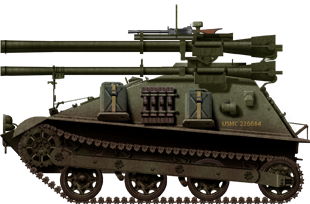
USMC M50A1 Ontos in Vietnam

USMC CGC M706 V-150 of the USMC in Vietnam
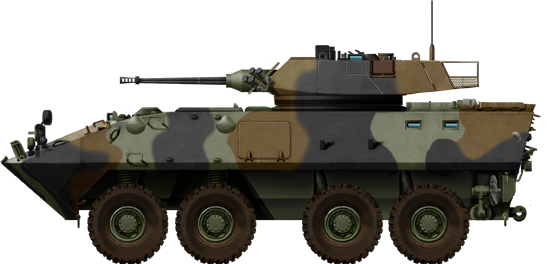
USMC LAV-25 guarding a Saudi Airport during Operation desert storm in 1991
Amphibians

USMC LVTP-5 in Vietnam 1967
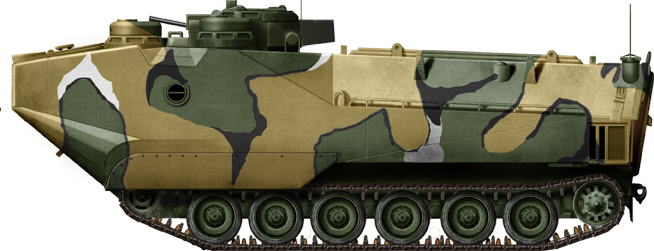
UMSC AAVP-7 (LVTP-7), Grenada invasion 1982.
Specialized Vehicles
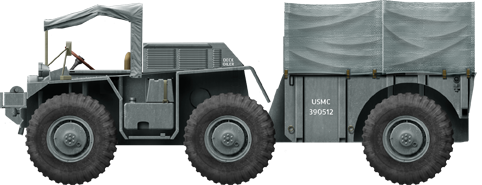
M561 Gama Goat of the Navy/USMC in Vietnam 1971
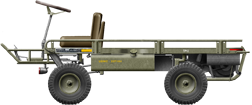
M274 Mule in Vietnam 1969
Coordination with the Army
The Marine Corps capabilities overlap with the United States Army’s own assets, creating some competition for funding and missions, albeit the service size comparison is really no match. In practice, a bit like for the USMCAF, assets are funded, tested and developed by the Army first and foremost. Procurement is different though. A good example is the use of amphibians in general. Aklthough the army do use amphibious capable vehicles, it is in relation to river crossing operations.
That competition betrween USMC and Army for land assets dates back to the founding of the Continental Marines as General George Washington refused to allow Marine battalions to come from his Continental Army or use its assets.
Prior to World War II, and in the wake of the 1929 finiancian crisis and great depression, Army leadership pushed forward the idea of dissolving the Marine Corps entierly, and instead for any amphibious assault, work directly with the Navy. General Dwight D. Eisenhower and Army Chief of Staff George C. Marshall later would be intrumental in this, butof course Navy brass were adamantely opposed, and the Goldwater-Nichols Act reshaped services roles and relationships with each othe, with joint decision making being central. Department of Defense Directive 5100.01 in the end decided that the Army and Marine Corps would cooperate for expeditionary and amphibious operations. In WW2 indeed, especially under supervision of Gen. Doug. McArthur, both corps cooperated in the Pacific, which was not the initial plan.

By December 1941 indeed when the US went at war, Marshall and CNO Admiral King discussed the matter and established area of reponsibility, basically the Army would concentrate on the European front (starting with Operation Torch in Nov.1942) while the USMC would be tasked of island operations in the Pacific, starting with Guadalcanal in August 1942. However due to the size of the USMC and ferocious nature of combats in the Pacific, by 1943 the Army started to buff contingents in many operations. Some island operations were almost entirely performed with the Army. The most famous campaign being the invasion of the Philippines. The Army, especially after the war ended in Europe by May 1945, took a much greater part in operations, and if Olympic was to be realized, the Army by far would have made the essential forces deployed, the USMC being given diversionary roles.
Fast forward to this day, most of the 2000s spent in operations in Afghanistan and Iraq raised concerns again and Secretary of Defense Robert Gates tasked about the Marine Corps as a redundant “second Army” since they were deplyed for operations that had nothing to do with their traditional amphibious assault roles. The Marine Corps since was revised, sent its main battle tanks to the Army and was reduced in size, refocused on littoral operations, not overlapping the Army.
The Army still posses, like the USMC a diverse combat arms including special operations (Ranger vs Raiders) -The Seals are Navy spec ops- and far larger logistics, departrments in all area, as well as keeping its own expeditionary forces and a powerful airborne component the USMC lacks. Instead the latter is merely heliborne, which is not the same. The USMC past studies about its role is always trying to be somewhere in between mobility and protection. The units were reshaped to be much smaller, to be more easily manageable and deployable, and with integrated aviation support. Some still considers the USMC as part of large array of special forces, under the U.S. Special Operations Command. But the USMC, albeit seen as elite as well as the Rangers and Paratroopers, had themselves developed from 2003, a modenrized Marine Raiders corps (created for the pacific) providing the Special Operations Command is one MCSOCOM Detachment One. Their train,ing and procedures are largely closer to the Ranger and other Army Special Forces units than the Seals in that regards.
Culturally, marines and soldiers share the same slang and terminology, albeit the USMC also uses many naval terms and traditions far from the Army lifestyle and own unique vernacular. Many more former active duty marines serves in the Army’s reserve components. The Army does not require transfers from the Marines and very few former soldiers serve in the Marine Corps.
USMC Air Assets
USMC’ organic aviation had a long tradition going back to the interwar. There again, albeit they shared similar assets, aircraft to navy specs made for its aircraft carriers (with the interdiction to have bombers) and these same models were also used incidentally by the smaller USMC air branch. Repartition of roles is sometimes complicated due to frequent overlaps, but in general, USMC air assets were deployed on land, overseas Naval Air Stations and bases. When deployed from aircraft carriers, which was rare, they operated solely for invasion support because there was no airfield available in the area. A good example was the case of the Vough F4U corsair, a Navy-ordered fighter that was to be used in complement to the F6F Hellcat for attack missions. Found too dangerous to operate on board aircraft carriers, most ended with the USMC base don land airfield. The squadron “black sheep” headed by “pappy” Boyington is an illustration of this. At Henderson field, the main aviation contingent was from the USMC. Thus during the pacific war, the USMC operated the Corsair from land bases, while the Navy used F6F from its aircraft carriers.

Fast forward to the cold war and helicopters changed everything. It became the de facto mount for the USMC whereas its use for the Navy focused on ASW, plane guard, SAR and liaison. On the same vein, when VTOL aircraft were introduced, their unique capability made them ideally suited to operate from smaller decks of amphibious assault carriers. In this field, the USAF retained assets inaccessible to both the Navy and USMC. There are no stealth heavy bomber or heavy lift aircraft used by them for example. USMC air assets are not identical to the USN own air groups in composition, composed of a range of carrier aircraft. If the USMC can operate from regular large aircraft carriers, their primary assault platform is a LHD or LPD, a smaller vessel with more limited deck space and capabilities (not catapult for example). They are not CATOBAR ships (see later) but only alowed VTOL operations.
Thus, the Marine Corps Aviation is highy dependent of rotary-wing more than fixed-wing aircraft. These are the means to conduct Assault Support and close air support for ground operations. Light transport and attack today is provided by the modernized Bell UH-1Y Venom (a successor to the Vietnam legend UH-1) and the Bell AH-1Z Viper for close support. Medium-lift squadrons uses the MV-22 Osprey tiltrotor also today. Heavy-lift squadrons depends on the CH-53E Super Stallion (also a Vietnam era asset, modernized) or theupgraded CH-53K (the venerable twin-rotor Chinook of the same era).
The fixed wings components due to the constraints of the ships carrying them, could only be VTOL aircraft: Marine attack squadrons operated the AV-8B Harrier II, graduallt scheduled to be replaced by the F-35. However until then, the fighter/attack mission is handled by two versions of the F/A-18 Hornet strike-fighter aircraft, operated from a regular CATOBAR carrier. The AV-8B use is mandatory while the F/A-18 is optional, when such large carrier is present with the attack force. The F-35 Lightning II is supposed to have enough performances to replace both types, and bring this efficient fighter support the AV-8B partly lacks.
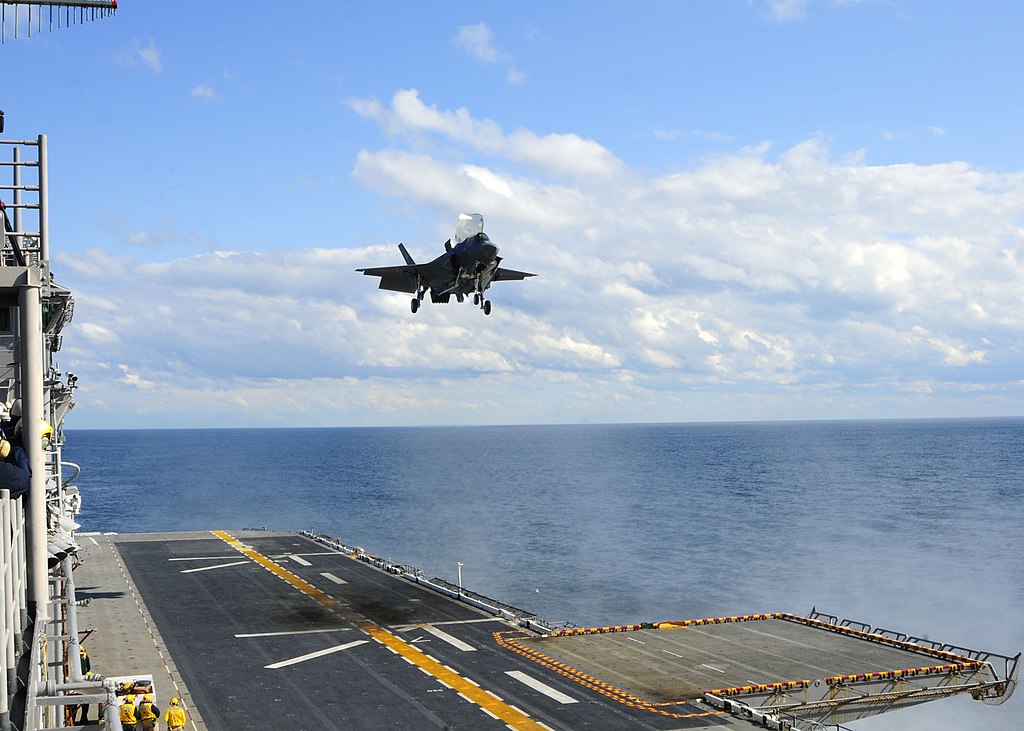
A Marine Corps F-35B, the vertical-landing version of the F-35 Lightning II multirole fighter landing aboard USS Wasp
The UMSC still operates its own organic aerial refueling assets with KC-130 Hercules and a large, notably logistic support from the U.S. Air Force. The USMC Hercules is used both as ground refueler and tactical-airlift transport. The USMC also possesses electronic warfare plane, the EA-6B (until retired in 2019). There is no replacement in sight. The Marines now also operates a range unmanned aerial vehicles such as the RQ-7 Shadow and Scan Eagle drones for tactical reconnaissance.
The Marine Fighter Training Squadron 401 (VMFT-401) is today one the most elite unit working with the USAF, with a range of F-5E, F-5F and F-5N Tiger II playing adversary (aggressor) training, notably at TOP GUN. Marine Helicopter Squadron One (HMX-1) uses the large VH-3D Sea King and VH-60N Whitehawk helicopter, in the VIP transport role, such as Marine One, the presidental helicopter for short US territory hops. The VH-92 Patrio shoukd replace them. The Blue Angels demo team also depends on a single Marine Corps C-130 Hercules “Fat Albert” in deployment support when abroad.
Coordination with the Air Force
Some of Marine Corps Aviation assets derive from the Navy, but heavy support is provided by United States Air Force, notably the USAF Air Mobility Command to airlift them, and also extra close air support from the Air Force when in operations. The Air Force also could attach Tactical Air Control Party units to ground forces and provide better coordination. It’s the MAGTF commander which retains control of the Marine’s organic aviation assets, and Marine Aviation missions not in support to MAGTF would be controlled by the JFACC (Air Force Command).
United States Navy LSDs
 Thomaston class (1954)
Thomaston class (1954)

The Thomaston class was a class of dock landing ships (LSD) used by the United States Navy in the 1950s and 1960s. The class consisted of four ships: USS Thomaston (LSD-28), USS Fort Snelling (LSD-30), USS Point Defiance (LSD-31), and USS Monticello (LSD-35).
The Thomaston class was developed in response to the growing need for amphibious warfare support ships during the Cold War. The ships were designed to transport and deploy amphibious vehicles, equipment, and troops to support beach landings and other operations. They were also capable of providing support for helicopter operations.
The ships had a displacement of approximately 8,500 tons and were powered by diesel engines, which gave them a top speed of around 18 knots. They had a crew of around 300 and could carry up to 20 amphibious vehicles, as well as up to 600 troops. The ships were armed with a variety of weapons, including 40mm and 20mm anti-aircraft guns and 3-inch/50 caliber guns.
The Thomaston class ships saw extensive service during the Vietnam War, where they played a vital role in transporting troops, supplies, and equipment. They also participated in a variety of other operations and exercises throughout the 1950s and 1960s.
The Thomaston class ships were eventually retired from service in the 1970s and 1980s, with the last ship, USS Monticello, decommissioned in 1982. Despite being retired, the class played an important role in the development of modern amphibious warfare ships and helped establish the United States Navy’s ability to support amphibious operations around the world.
 Raleigh class LPDs (1962)
Raleigh class LPDs (1962)
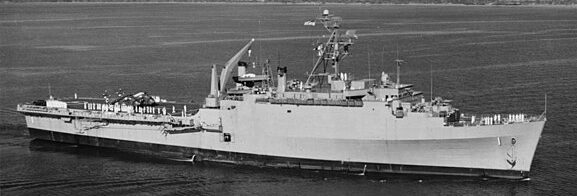
The Raleigh class was a class of Amphibious Transport Dock (LPD) ships used by the United States Navy from the early 1960s to the early 2000s. The class consisted of three ships: LPD 1 USS Raleigh (1962) LPD 2 USS Vancouver (1963) and LPD 3 USS La Salle (1964)
The Raleigh class was designed to transport and deploy troops, equipment, and amphibious vehicles to support amphibious landings and other operations. They were also capable of providing medical support and operating as a mobile command center.
The ships had a displacement of approximately 11,000 tons and were powered by steam turbines, which gave them a top speed of around 22 knots. They had a crew of around 400 and could carry up to 900 troops, as well as up to 14 amphibious vehicles. The ships were armed with a variety of weapons, including 3-inch/50 caliber guns, 20mm and 40mm anti-aircraft guns, and 5-inch/38 caliber guns.
The Raleigh class ships saw extensive service during the Vietnam War, where they played a vital role in transporting troops, supplies, and equipment to support amphibious operations. They also participated in a variety of other operations and exercises throughout the 1970s, 1980s, and 1990s.
Both ships were decommissioned in the early 2000s and replaced by the newer San Antonio class LPDs. However, the Raleigh class played an important role in the development of modern amphibious warfare ships and helped establish the United States Navy’s ability to support amphibious operations around the world.
 Austin class LPDs (1964)
Austin class LPDs (1964)
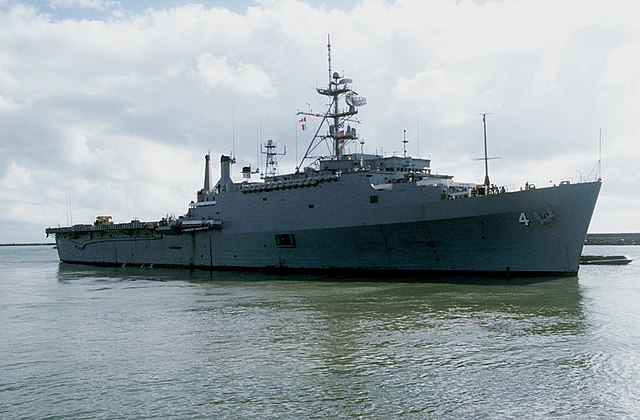
The Austin class was a class of Amphibious Transport Dock (LPD) ships used by the United States Navy from the early 1970s to the mid-2000s. The class consisted of 12 ships: USS Austin (LPD-4), USS Ogden (LPD-5), USS Duluth (LPD-6), USS Cleveland (LPD-7), USS Dubuque (LPD-8), USS Denver (LPD-9), USS Juneau (LPD-10), USS Coronado (LPD-11), USS Shreveport (LPD-12), USS Nashville (LPD-13), USS Trenton (LPD-14), and USS Ponce (LPD-15).
The Austin class was designed to transport and deploy troops, equipment, and amphibious vehicles to support amphibious landings and other operations. They were also capable of providing medical support and operating as a mobile command center.
The ships had a displacement of approximately 17,000 to 18,000 tons and were powered by steam turbines, which gave them a top speed of around 21 knots. They had a crew of around 600 and could carry up to 900 troops, as well as up to 20 amphibious vehicles. The ships were armed with a variety of weapons, including 20mm and 25mm anti-aircraft guns, Phalanx close-in weapon systems, and 5-inch/54 caliber guns.
The Austin class ships saw extensive service during the Gulf War, where they played a vital role in transporting troops, supplies, and equipment to support amphibious operations. They also participated in a variety of other operations and exercises throughout the 1980s, 1990s, and early 2000s.
All 12 ships have since been decommissioned and replaced by the newer San Antonio class LPDs. However, the Austin class played an important role in the development of modern amphibious warfare ships and helped establish the United States Navy’s ability to support amphibious operations around the world.
 Anchorage class LPDs (1969)
Anchorage class LPDs (1969)

The class comprised LSD36 Anchorage, the prototype made at Ingalls, Pascagoula (laid down 13.3.1967, launched 5.5.1968, comp. 15.3.1969) and the followers were LSD37-40 USS Portland, Pensacola, Mount Vernon and Fort FisherGeneral all made at General Dynamics, Quincy. They were
 Whidbey Island class LPDs (1983)
Whidbey Island class LPDs (1983)

The Whidbey Island class is a class of Dock Landing Ships (LSD) used by the United States Navy. The class consists of eight ships, which were commissioned between 1985 and 1992.
The Whidbey Island class is designed to transport and launch amphibious craft and vehicles, such as Landing Craft Air Cushion (LCAC) and Amphibious Assault Vehicles (AAVs), to support amphibious landings and other operations. They can also serve as a floating base for helicopters and vertical takeoff and landing aircraft.
The ships have a displacement of approximately 15,000 tons and are powered by diesel engines, which give them a top speed of around 20 knots. They have a crew of around 22 officers and 391 enlisted sailors and can accommodate up to 500 Marines.
The Whidbey Island class ships are equipped with a variety of weapons, including two 25mm chain guns, two Phalanx close-in weapons systems, and two .50 caliber machine guns.
The ships have seen service in a variety of operations, including the wars in Iraq and Afghanistan, as well as humanitarian missions and disaster relief efforts around the world.
 San Antonio class LPDs (2000)
San Antonio class LPDs (2000)
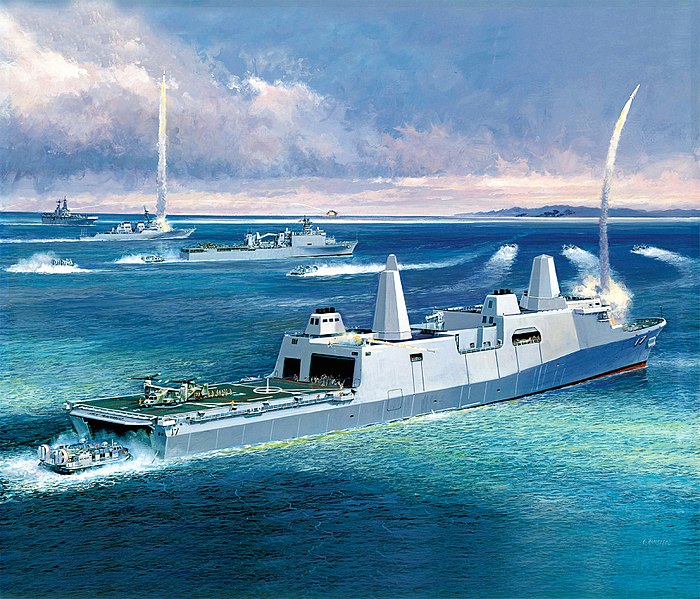
The San Antonio class is a class of Amphibious Transport Dock (LPD) ships used by the United States Navy. The class consists of eleven ships, with the lead ship being USS San Antonio (LPD-17).
The San Antonio class is designed to transport and deploy up to 800 troops, their equipment, and their vehicles to support amphibious landings and other operations. They also have facilities for medical treatment, and can operate as a mobile command center.
The ships have a displacement of approximately 25,000 tons and are powered by gas turbines and diesel engines, which give them a top speed of over 22 knots. They have a crew of around 360 sailors and can carry up to 699 Marines. The ships are equipped with two Landing Craft Air Cushion (LCAC) hovercraft, which can carry heavy equipment and vehicles from the ship to shore.
The San Antonio class ships are armed with a variety of weapons, including two Bushmaster II 30mm cannons, two Rolling Airframe Missile (RAM) systems, and two .50 caliber machine guns. They also have the capability to launch and recover helicopters and tilt-rotor aircraft.
The San Antonio class ships have seen service in a variety of operations, including the wars in Iraq and Afghanistan. The class represents a significant improvement over earlier LPD classes, with advanced command and control capabilities, improved survivability, and enhanced communication and networking systems.
Read More/Src
Books
Conways all the world’s fighting ships 1947-95
Links
https://www.usmcmuseum.com
marines.mil/
surfpac.navy.mil/
en.wikipedia.org United_States_Marine_Corps
twz.com meet the biggest and baddest ships in the us army
commons.wikimedia.org/ Vehicles USMC
archive.ph mcu.usmc.mil
surfpac.navy.mil/ Amphibious-Assault-Ship-LHD-LHA/
military.com/ tarawa wasp class amphibious assault ship
marines.mil/ Overview.pdf
apps.dtic.mil ADA262304
Videos

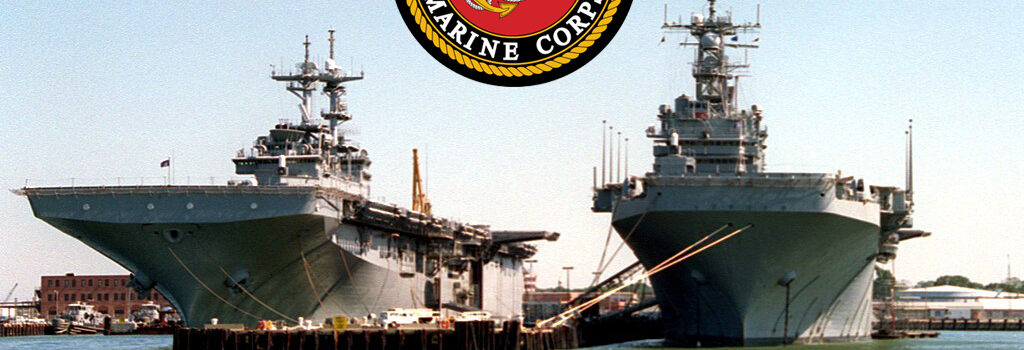
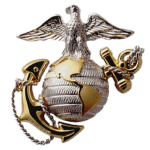
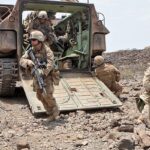
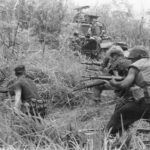
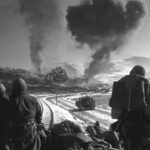
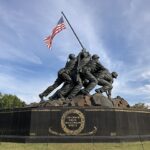
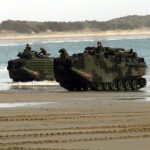

 Latest Facebook Entry -
Latest Facebook Entry -  X(Tweeter) Naval Encyclopedia's deck archive
X(Tweeter) Naval Encyclopedia's deck archive Instagram (@navalencyc)
Instagram (@navalencyc)





 French Navy
French Navy Royal Navy
Royal Navy Russian Navy
Russian Navy Armada Espanola
Armada Espanola Austrian Navy
Austrian Navy K.u.K. Kriegsmarine
K.u.K. Kriegsmarine Dansk Marine
Dansk Marine Nautiko Hellenon
Nautiko Hellenon Koninklije Marine 1870
Koninklije Marine 1870 Marinha do Brasil
Marinha do Brasil Osmanlı Donanması
Osmanlı Donanması Marina Do Peru
Marina Do Peru Marinha do Portugal
Marinha do Portugal Regia Marina 1870
Regia Marina 1870 Nihhon Kaigun 1870
Nihhon Kaigun 1870 Preußische Marine 1870
Preußische Marine 1870 Russkiy Flot 1870
Russkiy Flot 1870 Svenska marinen
Svenska marinen Søværnet
Søværnet Union Navy
Union Navy Confederate Navy
Confederate Navy Armada de Argentina
Armada de Argentina Imperial Chinese Navy
Imperial Chinese Navy Marinha do Portugal
Marinha do Portugal Mexico
Mexico Kaiserliche Marine
Kaiserliche Marine 1898 US Navy
1898 US Navy Sovietskiy Flot
Sovietskiy Flot Royal Canadian Navy
Royal Canadian Navy Royal Australian Navy
Royal Australian Navy RNZN Fleet
RNZN Fleet Chinese Navy 1937
Chinese Navy 1937 Kriegsmarine
Kriegsmarine Chilean Navy
Chilean Navy Danish Navy
Danish Navy Finnish Navy
Finnish Navy Hellenic Navy
Hellenic Navy Polish Navy
Polish Navy Romanian Navy
Romanian Navy Turkish Navy
Turkish Navy Royal Yugoslav Navy
Royal Yugoslav Navy Royal Thai Navy
Royal Thai Navy Minor Navies
Minor Navies Albania
Albania Austria
Austria Belgium
Belgium Columbia
Columbia Costa Rica
Costa Rica Cuba
Cuba Czechoslovakia
Czechoslovakia Dominican Republic
Dominican Republic Haiti
Haiti Hungary
Hungary Honduras
Honduras Estonia
Estonia Iceland
Iceland Eire
Eire Equador
Equador Iran
Iran Iraq
Iraq Latvia
Latvia Liberia
Liberia Lithuania
Lithuania Mandchukuo
Mandchukuo Morocco
Morocco Nicaragua
Nicaragua Persia
Persia San Salvador
San Salvador Sarawak
Sarawak Uruguay
Uruguay Venezuela
Venezuela Zanzibar
Zanzibar Warsaw Pact Navies
Warsaw Pact Navies Bulgaria
Bulgaria Hungary
Hungary

 Bundesmarine
Bundesmarine Dutch Navy
Dutch Navy Hellenic Navy
Hellenic Navy Marina Militare
Marina Militare Yugoslav Navy
Yugoslav Navy Chinese Navy
Chinese Navy Indian Navy
Indian Navy Indonesian Navy
Indonesian Navy JMSDF
JMSDF North Korean Navy
North Korean Navy Pakistani Navy
Pakistani Navy Philippines Navy
Philippines Navy ROKN
ROKN Rep. of Singapore Navy
Rep. of Singapore Navy Taiwanese Navy
Taiwanese Navy IDF Navy
IDF Navy Saudi Navy
Saudi Navy Royal New Zealand Navy
Royal New Zealand Navy Egyptian Navy
Egyptian Navy South African Navy
South African Navy






























 Ukrainian Navy
Ukrainian Navy dbodesign
dbodesign